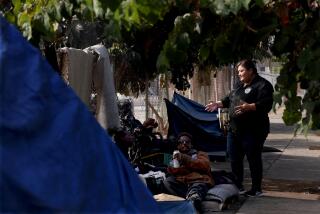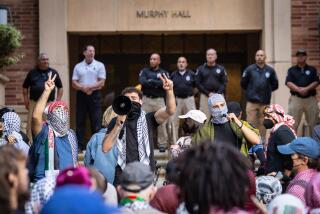Looks Like a Good Plan : Bradley proposes preparation to avoid repeating April’s breakdown
- Share via
In the next few months, two potentially explosive trials are expected to come to conclusion: the new trial in federal court of the four police officers accused of violating the civil rights of Rodney G. King and the trial of the four men accused of beating Reginald O. Denny. With that ahead for Los Angeles, Mayor Tom Bradley has come up with a plan to avert trouble this time. It’s a good idea that deserves communitywide support.
The plan would use hundreds of volunteers in a “Neighbor to Neighbor” program designed to channel emotions into constructive discussion. The volunteers, including community activists, ministers and social workers, will visit schools, housing projects and other places to tap into the public mood. The purpose is to stop violence before it begins.
“The idea is that we can understand what people are thinking so that we can adjust our plans if we have to,” a Bradley aide said. “And we want to make sure that people can talk about and understand the trials so that feelings and frustrations don’t build up.”
The mayor met on the plan Friday with other officials. Let’s hope that for once everyone is on the same team. The political Balkanization of Los Angeles was never more evident than in the riots, when government at many levels was paralyzed and disconnected from the people.
The mayor and other elected officials now admit they were caught off guard by the convulsive reaction to the April verdicts in the trial of the officers accused of beating King. The incident was captured on videotape and viewed the world over, as was the beating of Denny.
In each of the coming trials, as before, a videotape that everyone has seen--a fact that many believe makes the public more likely to second-guess jury verdicts--will be a key element.
At all costs, the city must avoid conditions like those that fueled the riots of last spring. Thus no project before local government should have higher priority than the “Neighbor to Neighbor” program. Indeed, consider what might have been if local leaders had been thinking ahead this time last year.
More to Read
Sign up for Essential California
The most important California stories and recommendations in your inbox every morning.
You may occasionally receive promotional content from the Los Angeles Times.










